Tag: training
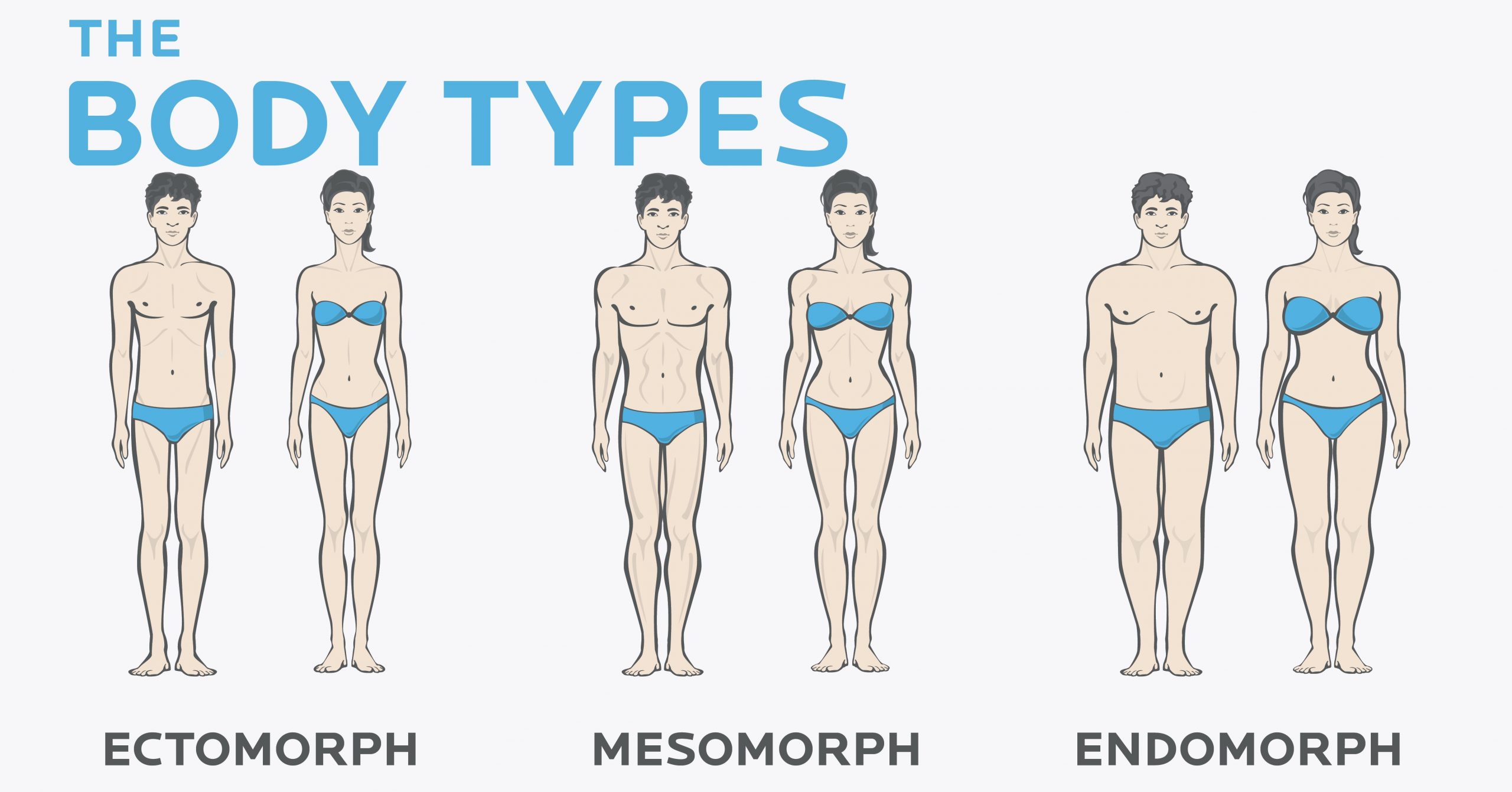
Train Right For Your Body Type With These 8 Tips
Train Right For Your Body Type With These 8 Tips
Building muscle and crafting the physique of your dreams demands much more than lifting a few dumbbells and drinking a protein shake. Contrary to what you might think, finding the cable pulley machine vacant is not the most surprising thing that can happen in the gym. The fact that most people follow an unsuitable training program as per their body type and still expect to see results top the list.
Since you are reading this article, chances are you are one of these people. While you might see some positive changes in your body after following a vanilla training program (one program fits all), you will not be achieving your body’s maximum potential.
If you want to put on a freak show every time you take your shirt off, you need to double down on your strengths and work on your weaknesses. You’ll only be able to achieve this feat if you train for your body type.
How To Train For Your Body Type
1. Figure Out Your (True) Body Type
When asked about the body type, most people reply with their desired body structure instead of the actual body type. For example, an ectomorph might choose a training and diet program designed for a mesomorph because he wants to have that body composition.
But why would anyone do that, you ask?
Body insecurities.
If ectomorph and mesomorph sound like characters out of Aquaman, here is a quick introduction to body types for you:
Ectomorphs – Naturally lean with narrow shoulders and hips. Ectomorphs have a fast metabolism and struggle to gain weight.
Mesomorphs – Thin build with narrow hips and clavicles. Mesomorphs generally have small joints, long limbs, and stringy muscle bellies.
Endomorphs – Have heavier bone structure with a squarer torso. Endomorphs have wider waists, larger hips, and a slower metabolism.
2. Check For Hybrids
As weird as it might sound – you probably are not a pure breed. We usually tend to make sense of everything by putting it in linear terms, but the world can be more complex than that.
A majority of the people have a dominant body type with a few characteristics of other types, or a body type that has equal qualities of two different body types – meaning you could be an ectomorph with few qualities of a mesomorph.
And if you are wondering – no, it is not a bad thing. You’ll not end up looking like a monster. A combination of body types means you have the strengths of two different body types. Following the right program for your body type will open doors to unlimited gains.
3. Get Your Diet and Workout Programs In Line
Losing or gaining weight will depend on calories in vs. calories out. If you want to lose weight but eat anything you can get your hands on, no amount of hard work in the gym can get you on the right track.
Your diet will determine your body’s size/volume, and workouts will mold your body shape and muscle composition. With this said, diet alone can’t get you your dream physique.
Following a personalized training program will influence your muscle-to-fat ratio. Lifting weights will help you sculpt the body the Greek God would approve. Designing a calorie and macronutrient-focused diet plan and following the correct workout routine as per your body type will give your transformation wings.
4. Ectomorphs Can Go Easy On The Cardio
We are sure you know people who won’t gain weight no matter how much they eat. These people generally are ectomorphs. If ectomorphs do too much cardio in hopes of shedding the excess belly fat in search of abs, they might end up spiking their cortisol levels.
High cortisol levels make the body store more fat as it signals to the body that it is under stress. The body then bumps up its fat reserves in anticipation of a fight or flight situation.
The primary goal of an ectomorph should be to build muscle mass and strength through resistance training. Performing compound lifts like squats, deadlifts, and bench presses can help kickstart your muscle-building journey.
5. Mesomorphs Do Better With Low-Intensity Cardio
Building muscle or losing the extra kilos can be a little tricky for mesomorphs. Since they are in the middle of the two extremes, figuring out the correct training style can involve trial and error.
If you are a mesomorph happy with his body composition, you should add low to moderate-intensity cardio to your fitness routine.
Mesomorphs have fewer slow-twitch muscle fibers because of which they have lower endurance levels. Getting too comfortable with your workouts and not switching up things can lead to a plateau. Although lower-intensity cardio will get you better results, you should switch your exercises constantly to shock your muscles into growing.
6. Endomorphs Can Get Super Big Super Fast
If you are dominantly an endomorph and don’t care about looking like you’ve been on a carb-restricted diet for 1000 years, you are going to experience the magic of genetics. You don’t have to launch a full-blown FBI-style investigation to figure out the body type of most powerlifters and weightlifters.
Design your resistance training around fast-twitch muscle fibers using heavier weights for fewer reps. Low-intensity cardio for burning stubborn body fat will prove to be most effective.
7. Make HIIT Your Darling
High-intensity interval training (HIIT) is an incredibly efficient tool for building muscle mass and losing body fat. HIIT workouts are a form of anaerobic exercise that facilitates the burning of stored body fat as fuel.
A raised metabolic rate is one of the most underrated benefits of HIIT workouts. A high metabolic rate makes you burn calories at a faster rate even after your workouts. You’ll still be burning calories while you’re sitting on a couch after a workout. What else could an endomorph want?
8. You Don’t Need Full-Body Strength Training Workouts
Many people, especially fitness rookies, try to outdo themselves in every training session. They routinely perform full-body workouts assuming it will fast-track their physique transformation.
Your goal should be to achieve greater muscle stimulation which is possible through higher volume and intensity. You would be better off training not more than two muscles in a single training session.
Training up to two muscles in a single day also gives your muscles ample time for recovery. Ectomorphs are known to require more time to recover from intense workouts as compared to mesomorphs and endomorphs.
Are your workouts based on your body type? Let us know in the comments below. Also, be sure to follow Generation Iron on Facebook and Twitter.
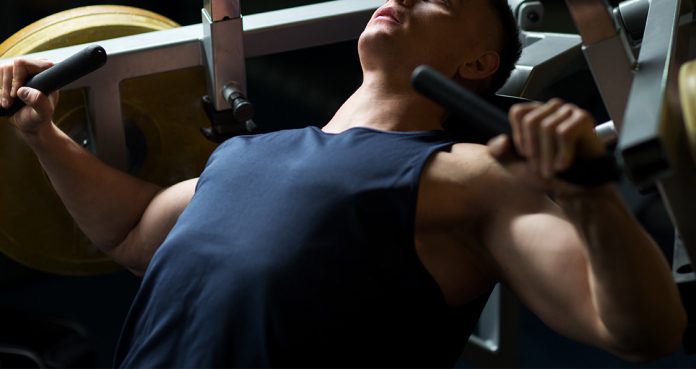
Follow This Guaranteed Way of Developing Your Upper Chest
Develop Your Upper Pecs With These Steps
If you’re like most people, your upper chest will be one of your weakest muscle groups. The upper chest can be one of the most stubborn muscle groups to develop. You’ll need much more than a vanilla chest workout program to develop your upper pecs.
Making a single adjustment will not be enough to see positive progress. You’ll need to make a series of modifications to ignite new muscle growth and make your upper pecs show improvement.
Train Your Upper Pecs At The Beginning of Your Chest Workout
Most people train their upper pecs later in their chest workout when the fatigue starts to kicks in. You should make it a point to train your weaker muscle groups at the beginning of your workouts while you’re fresh and full of energy.
Depleting ATP (Adenosine Triphosphate) stores can reduce the overall effect of the exercises on your upper pecs. If you train your upper pecs later in your workouts, you might not have the best mind-muscle connection and the resulting pump.
Use Advanced Training Principles
Many people stick to the stock training programs of 3 sets of 12-10-8 repetitions. If you follow this workout for too long, your body will get accustomed to it and will stop showing progress.
You should include at least one advanced training principle like the drop-sets, super-sets, intra-set stretching, BFR training, etc. in your workouts. You need to keep your muscles guessing in order for them to grow bigger and stronger.
Thanks to the advancement in exercise science, there are enough advance training principles that you can employ a new one in your workouts every week for a long period of time.
Show Your Upper Chest Some Love on Shoulder Day
It’s common practice amongst gym-goers to train their weaker muscle groups twice a week. For instance, if an individual has weaker biceps, he might train his biceps on Monday with his triceps and on Thursday with his back.
Most people don’t follow the same approach with their chest and reserve their pec training to a single day. If you have a lagging upper chest, you should do a few sets of incline bench work on your shoulder day.
You could do some incline bench presses, dumbbell flyes at the end of a shoulder workout or modify your military shoulder presses to target your upper pecs by using a 75-80-degree incline bench. You’ll be destroying two targets with a single arrow with the second approach.
Change Your Rep Tempo
You need to constantly shock your muscles into growing and changing your rep tempos is one of the best ways of doing it. Most people follow the vanilla (1:1:1:1) rep tempo where they take one second each to lower the weight, pause at the bottom, elevate and pause at the top respectively.
Modifying the rep tempo and following something like (4:2:1:2) can change the entire dynamics of your workouts and wake your upper pecs from hibernation. There can be a million combinations of the rep tempos and you should keep experimenting with them.
Header image courtesy of Envato Elements
Which is your weakest muscle group? Let us know in the comments below. Also, be sure to follow Generation Iron on Facebook, Twitter, and Instagram.
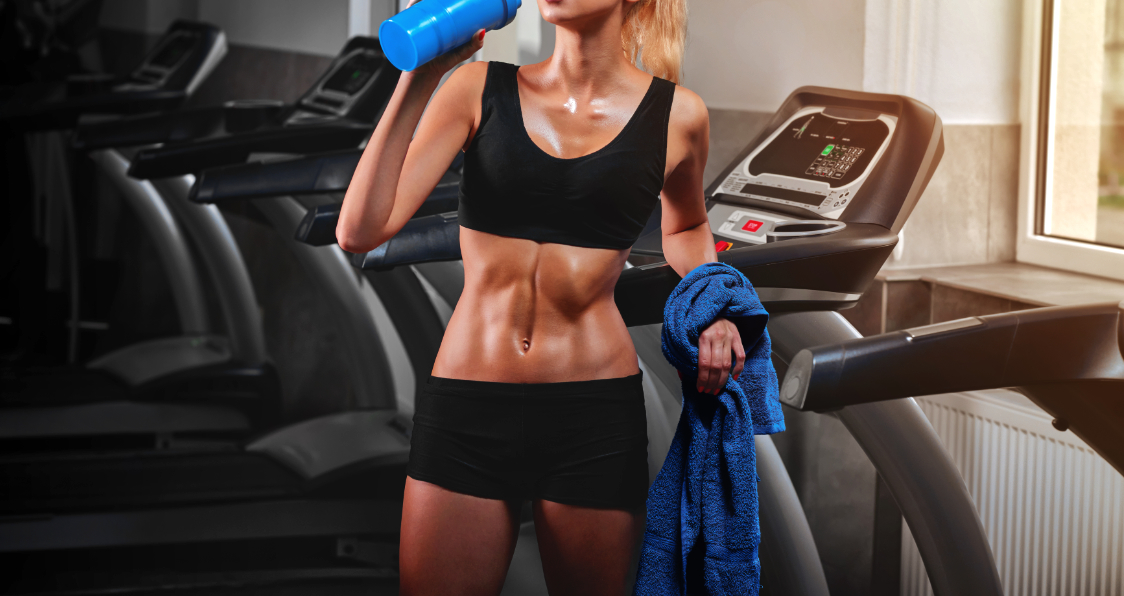
7 Fitness Habits You Need To Break Today
7 Fitness Habits You Need To Break Today
Human nature pushes us to figure out the easiest way of doing a task. We form routines around them that make us work in an “overdrive” mode. Fitness habits are no different. Many people try to find the easiest way of milking the fitness cow as soon as they step inside a gym.
You might even have come across a quote that is widely attributed to Bill Gates:
“I choose a lazy person to do a hard job. Because a lazy person will find an easy way to do it.”
Sadly, this hack will not get you anywhere in the gym.
Pain, exhaustion, and sweat are a few indicators that tell you if you’re doing the right things in the gym. When most people join a gym, they follow their friendly neighborhood gym bro’s advice without questioning the status quo.
A pro fitness athlete would tell you that gym bros aren’t the best place to get your advice from. Performing hundreds of repetitions of the wrong advice can reinforce habits that will take a lot of time to fix. Luckily, habits can change, whether the habit is biting your nails or decrying your genetics when you can’t seem to make any gains.
Worst Fitness Habits That You Need To Fix
1. Believing Everything You Hear
Almost every person who has ever stepped foot inside a gym forms strong opinions about lifting weights. Before handing out fitness advice, some people even discount the fact that they have only been to a gym once in their life.
And then there are people on the other end of the spectrum who take advice from just about anyone. The latter group of people becomes soft targets for the gym bros.
Interestingly, most of the advice that does the rounds in the fitness circles is nothing more than folklore. Some of the most common fitness myths are:
a) Working out on an empty stomach will help burn fat.
Research has found that while training in a fasted state could burn more calories from fat, it could also cause the body to break down muscle tissues to burn protein as fuel.
b) Women will get bulky if they lift weights.
This is one myth that refuses to die even after several studies have proven that women don’t produce enough testosterone to build as much muscle mass as their male counterparts.
2. Over Keen
Every gym has a group of people who are too eager to achieve their dream physique. For them, the amount of time they spend in the iron paradise is directly proportional to the gains they can make in a single day.
Switching programs too often, trying new advanced training principles, and making unhealthy changes to their diet program to speed up their transformation are trademarks of impatient lifters. If you make drastic changes to your lifestyle in the first week of joining a gym, you are setting yourself up for failure. Your goal should be to slowly build fitness habits that will help you successfully implement lifestyle changes.
3. Zero Accountability
Fitness is turning from an individual’s sport into a team sport. Most people fail in their transformation journey because they are not accountable to anyone. Failing in secrecy makes no difference as there are no consequences because no one will know any different.
Gone are the days when people used to work in dark and gloomy gyms.
The rise of Instagram and YouTube has made sharing transformation progress cool. By sharing your fitness online, you’ll not only be keeping yourself accountable, but you might also inspire others to join you.
Even if you don’t want to share your goals and progress online, you should share them with your friends and family so that you’re at least answerable to someone. It might feel like a small ask, but the psychological benefits of this approach alone will pay dividends in the long run.
4. Skipping Warm-Ups
Many people reach for the dumbbells as soon as they step inside a weight room. They consider warming up a waste of time and prefer lifting lighter weights for the first couple of sets as an alternative warm-up.
Although you might be saving 10-15 minutes by skipping the warm-up, dodging the pre-workout warm-up increases the chances of an injury during an intense workout. A warm-up routine should either consist of 5-10 minutes of cardio or some form of dynamic stretching.
5. No Game Plan
If you don’t have a detailed plan of how you’re going to achieve your dream physique, your odds of failing are relatively high. Vague goals like “I want to get fit”, “I want to lose weight”, or “I want to put on muscle mass” do not cut it.
You need to set a timeline for yourself. The next step after designing a transformation program is to devise a tracking and feedback mechanism. You should have weekly reviews to assess your progress and make necessary changes if and when needed.
A solid game plan has the following things built in:
Tweaking training and nutrition programs when the effort to reward proportion turns unfavorable. If you’re getting too comfortable with your training routine, it’s a sign you need to switch things up.
Staying away from vanilla training programs. Don’t bother following what is working for other people because everyone’s body is different and what might be working for them might not do the trick for you.
Plan all your workouts in advance. Everything from the exercises you will be doing, weights you will be lifting to the clothes you will be wearing should be dialed in.
Know your limits. You don’t want to spread yourself too thin by trying to do more than you’re capable of.
6. Not Using Gear
No, not that gear. Please put the syringes away.
Most people leave gains on the table by not using lifting accessories. Accessories like weightlifting belts, straps, wrist wraps can take your workouts to the next level.
Not only do the training accessories help in better recruitment of the muscles, but they also reduce the probability of injuries when working with heavier weights. Leave lifting raw to the powerlifting pros and speed up your transformation by using lifting accessories.
7. Recovery? What’s That?
No matter how hard you work in the gym, you will not see results until you give your muscles ample time to recover after your workouts. Remember: you break down muscle tissues in the gym. They grow back bigger and stronger when you’re following a good nutrition and recovery program.
You should be sleeping anywhere between 7-8 hours every night for optimal recovery. Some fitness habits to speed up recovery include:
Drinking at least a gallon of water every day.
Eating a high-protein post-workout snack.
Cooling-down after workouts.
Self-myofascial release.
Cold showers.
Are you a victim to any of these bad fitness habits? Let us know in the comments below. Also, be sure to follow Generation Iron on Facebook and Twitter.
Golden Era Lifts: 5 Exercises From The Iconic Era You Need To Try
5 Exercises From The Golden Era of Bodybuilding That You Need To Try
Many physique aesthetic fans will tell you the golden era of bodybuilding was the best time for the sport. They might be right as the kind of symmetry and conditioning the bodybuilders had in the golden era are almost non-existent now.
The quality of muscle and shape in those days was a result of some lifts which were the favorites of the bodybuilders. With time and introduction of new equipment, the golden era exercises have almost been forgotten.
Concentration Curls
The concentration curls turned into an iconic exercise after Arnold Schwarzenegger was seen performing them in the classic documentary, Pumping Iron. The concentration curls are an isolation exercise which works the peak of the bicep.
There are many variations of the concentration curls. If you’re a beginner, you should perform the exercise while sitting on a chair or a bench. Bend over and place your right elbow on the inside of your right knee while holding a dumbbell in your right hand.
Without swinging your arm, curl the dumbbell by flexing at your elbow. Keep the eccentric motion of the exercise slow and controlled. Switch to the left arm after completing the recommended repetitions on the right side.
Cross-Bench Dumbbell Pullovers
Cross-bench dumbbell pullovers can help you better isolate your lats by letting you drop your hips below the level of the flat bench. Lie down across a flat bench and place your upper back on the bench while holding a dumbbell with both your hands over your chest.
While keeping your elbows and lower body locked in place, take the dumbbell towards the floor. You should feel a contraction in your lats at the bottom of the movement. Bring the dumbbell back to the starting position and repeat for the recommended reps.
Sissy Squats
Sissy squats are an incredibly effective exercise when it comes to building the teardrop in your quads. With the advancement in training machines, sissy squats have unfortunately lost their charm amongst the Gen-X lifters.
Hold onto a machine or a column with one arm as you get in position to perform the sissy squats. Squat down while leaning your torso back so all the stress is on your quads. Always keep your hips forward while performing the exercise.
If you’re doing the sissy squats correctly, you won’t need any additional resistance. In case you do need to use weight, you can hold a weight plate in front of your chest with your free arm.
T-Bar Rows
The T-Bar rows are one of the most brutal back exercises which have been wiped out of the modern exercise guides. There are only a few other back exercises which can build the thickness in your back like the good old T-bar rows.
If you don’t have access to a T-Bar rows machine at your gym, you can use a barbell by putting one end of the barbell in a corner so it doesn’t move while you perform the exercise. Make sure you maintain an arch in your back while performing the exercise.
Forearm Roller
Most people treat their forearm workouts like accessory work and train them if they have some time to spare after their workouts. The golden era bodybuilders considered symmetry and muscle proportions to be the most important aspect of the sport and gave equal importance to all their muscle groups.
The forearm roller is one of the easiest exercises to perform but will leave you with a nasty forearm pump. While keeping your arms fully extended, raise the weight by rolling the bar until the weight reaches the top. Slowly unroll until the weight reaches the starting position and repeat for the recommended repetitions.
Header image courtesy of Envato Elements
Who is your favorite golden era bodybuilder? Let us know in the comments below. Also, be sure to follow Generation Iron on Facebook, Twitter, and Instagram.
If you like what you see, make sure to subscribe to Vidur’s official YouTube channel right here.
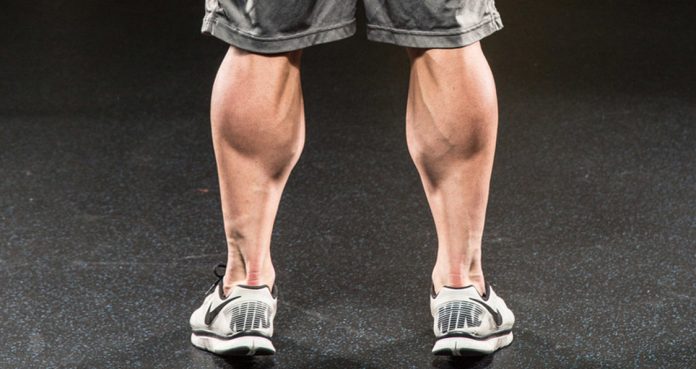
Grow Your Calves Into Bulls With This One Simple Trick
This One Tip Will Turn Your Calves Into Bulls
I’ll come out clean; I suffered from CLS (chicken leg syndrome) for a long time. My quads and hams weren’t as big a problem as compared to my calves. Small calves can make your legs looks skinnier than they are.
You don’t want to be ridiculed for having a huge upper body and tiny legs. Having a weaker lower body can even have an adverse psychological effect on you. You might lose all your confidence in your physique if your legs are lagging.
Wearing track pants to the gym and outside isn’t a permanent solution to this problem. Arnold’s weakest body part was his legs. He turned this weakness into a strength by wearing shorts to the gym every day.
People made fun of him for his skinny legs. Arnie, being the champion he is, used this body shaming as a motivation. Look around in your gym, and you might see people with relatively weaker calves.
Other than genetics, the reason behind this could be the lack of knowledge and understanding. The broscientists at your gym might have convinced you to follow the ‘right approach’ to calf training and stick to a certain number of exercises, sets, and reps.
Doing The Wrong Thing
Most people make the mistake of doing the same exercises over and over again. The most amount of variation they have in their calf workouts is the weekly alternation between the standing and seated calf raises.
Calves being the stubborn muscle groups they are, can be one of the hardest to grow. You need to train your calves from all the angles to ensure an overall development. The standing variation targets the gastrocnemius while the seated version targets the soleus.
When it comes to calf training, some people treat it as accessory work and train them at the end of their leg workouts after they’re completely exhausted. You should be training your calves at the beginning of your workouts, especially if you have underdeveloped calves.
Calves Are Not Different
While most people like doing 12-15 sets while training every other muscle group, they stick with just three sets for their calves. You stand on your calves for entire days. You need to be doing more to shock them into growing.
You should be treating your calves just like all the other muscle groups. Aim to hit failure every time you’re training your calves. Regularly changing the intensity of your calf workouts will also take your gains to the next level.
Grow Your Calves Into Bulls
I had tried everything, the standing and seated calf machines, donkey calf raises, single leg calf raises and calf raises on the leg press, but nothing seemed to work for me. There was hardly any technique I didn’t use.
This was when I decided to return to the basics and move my way up. I quit using any weights. I realised people with small calves (me included) wasted a lot of their time on the calf machines lifting heavy weight just to compensate for their toothpick legs.
Ego lifting keeps these people from having a complete range of motion – which is detrimental in developing your calves. I then did something which might sound a little counterintuitive. I stopped training calves in the gym.
Get On Your Toes
There is a reason ballerinas have toned calves even when they have skinny legs. They spend most of their times on their toes. This puts all their body weights on their calves and ankles. I could see how this can be my ticket to bigger calves.
No, I didn’t signup for a ballerina class. Instead, I decided to train my calves every single day for the next one month at home, right before I go to bed. This proved to be the change my calves needed.
The Workout
This workout consists of only one exercise and one set. You will be doing 100 reps of standing calf raises. You need to make sure you’re on your toes at the top of the movement and squeeze the hell out of your calves.
Have all the tension on your big toe while lifting yourself. Don’t transfer your weight on the smaller toes. You should look like a ballerina standing on her toes while you’re at the top of the movement.
Stand beside a wall and follow the same movement and momentum throughout the exercise. Don’t hold onto or lean against the wall. Doing this can take off the tension from your toothpicks.
You don’t have to worry about the negative motion (below parallel) of this movement. Squeezing your calves at the top of the movement and coming back to the starting position is enough to get the gains going.
Slowly raise yourself during the concentric movement (going up) and follow the same motion on the eccentric part. Don’t drop like a bomb while coming down. Maintain a mind-muscle connection throughout the exercise.
The first time you try this workout, your calves will be on fire. Go to bed right after finishing the workout and give your body time to recover. As you get better, add 15 reps to this exercise. Aim for complete muscle failure at the end of this workout.
Which is the most effective workout according to you?
Let us know in the comments below. Also, be sure to follow Generation Iron on Facebook, Twitter, and Instagram.
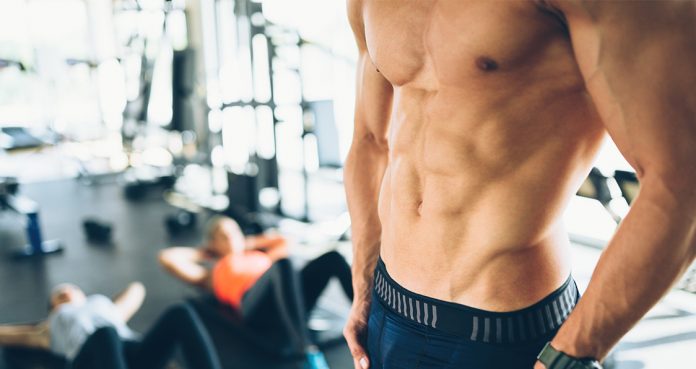
Build a Rock Solid Core With These Exercises
Perform These Exercises To Build A Rock-Solid Core
A rock-solid core isn’t only aesthetically appealing, it can add to your functional strength which helps in everyday activities. Building a shredded midriff is easier said than done. Washboard abs are the result of months of hard work in the gym and kitchen.
The massive fan following you’ll amass when you lift your shirt is just one of the perks of having a ripped abdomen. Just like us humans, no two ab exercises are the same. A few exercises are more effective in developing a solid core as compared to the others.
Planks
Planks are one of the most effective ab exercises. They were brought into the mainstream with the rising CrossFit popularity. While performing the plank, make sure your body is in a straight line and your hips don’t sack or form a bridge.
Windshield Wipers
Windshield wipers are a brutal exercise. If you’re a beginner, you might not be able to perform the windshield wipers. You can do the hanging leg raises until you develop the appropriate core strength.
Ab Wheel Rollouts
The Ab wheel rollouts work the entire abdomen and will leave you with a crazy ab pump by the end of the exercise. If you don’t have access to an ab wheel at your gym, you can use a barbell by putting a quarter plate at each end of the bar.
Toes To Bar
Performing the toes to bar requires strong core stabilizers. Most people make the mistake of using momentum by swinging back and forth while performing the exercise. As the name implies, your toes should touch the bar at the top of the movement.
Decline Bench Reverse Crunches
Reverse crunches are the opposite of the orthodox crunches. While the normal crunches work the upper abs, the reverse crunches work the lower abdomen. Performing the reverse crunches on a decline bench adds resistance to the exercise.
Cable Crunches
The cable crunches are an incredibly effective upper ab exercise. The upper and middle abs are stronger as compared to the lower abs and using added resistance can help better target the muscle group.
Landmine Twist
The obliques are one of the most overlooked muscles when it comes to ab training. Obliques are the fish gill-like muscles at the side of your abs. Landmine twists are one of the best exercises to target your obliques.
Smith Machine Toes To Heaven
Toes to heaven work your lower and middle abs. Lie down on an exercise mat with your chest facing the ceiling. Place your toes on the barbell and elevate your lower back to lift the bar. Your lower back should be directly under the barbell throughout the exercise.
Russian Twists
Russian twists are an oblique killer. Place your feet flat on the floor by bending at your knees and sit with an upright torso. Grab a dumbbell, kettlebell or a weight plate with both your hands with your arms extended straight over your knees. Twist to your right side while breathing out. Return to the starting position and repeat for on the left side.
Decline Bench Crunches
Decline bench crunches add flavor to the orthodox vanilla crunches. Performing the crunches on a decline bench add resistance to the exercise and makes it harder. You can add additional resistance by holding a weight plate next to your chest while performing the decline bench crunches.
Header image courtesy of Envato Elements
Which is your favorite ab exercise? Let us know in the comments below. Also, be sure to follow Generation Iron on Facebook, Twitter, and Instagram.
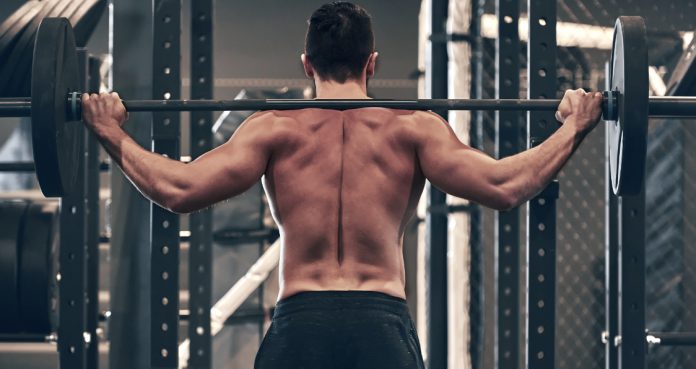
Busting Age-Old Fitness Myths (Long Overdue)
Fitness Myths That Need To Die
Myths have been around ever since Homo sapiens learned to communicate. While some folklore can kindle the human spirit and keep communities together, others can cause trouble. The role of myths in fitness circles is no different. Fitness myths can slow down progress, make you hit a plateau, and can even cause injuries.
Fitness myths have reached a stage where they have gained souvenir status and are passed from one generation to another. The unsuspecting fitness rookies fall for these shiny souvenirs and end up wasting a lot of time and energy following advice that does not work.
1. Rule #1 – No Pain, No Gain
Most people fail to differentiate between pain and pumps. Muscle pumps are great as they are a sign of muscles being flooded with lactic acid and blood. On the other hand, tendon, muscle, and joint pains signal that you’re doing something wrong.
An exercise should not hurt while you are doing it. If you ever feel like you’ll pop something during a workout, it is your body telling you to stop, and you better listen. In this instance, living by the Muhammad Ali quote “I only start counting when it starts hurting” can lead you to some serious damage.
2. Fasted Workouts Help Burn Fat Faster
If we got a dollar every time we heard this claim in the gym, we would be driving the Tesla truck by now. Many people assume working out on an empty stomach burns body fat as the body will utilize the stored fat as a source of energy.
But in reality, fasted training can be counterproductive. Studies have found that working out on an empty stomach can cause the body to break down muscle to burn glycogen as fuel.
Apart from this, working out on an empty stomach can negatively impact your performance. If you don’t have enough macros in your body, you’ll run out of gas before you can do anything meaningful during an intense workout.
3. If You Are Not Sore, You Are Not Training Hard Enough
Many people measure the effectiveness of their workouts by the degree of muscle soreness they experience over the next couple of days after a workout. These people try to train to failure in every workout and won’t leave the gym until they have a muscle-ripping pump.
You break down muscle tissues when you lift weights. Inflicting soreness-inducing damage on your muscles every time you train isn’t a good idea.
It is time you stop assessing your workout intensity through the severeness of your DOMS. Some people even use sweat as a yardstick. They will not consider a workout complete until they are drenched in sweat. Following a customized training plan is a better way of ensuring workout effectiveness. Put in the work and be patient. You can’t rush to your dream physique. Good things take time, and this is one of them.
4. Stretching Prevents Injury
Ask anyone trying to touch their toes before a workout why they are doing what they are doing, and they’ll probably tell you that stretching before a workout reduces the chances of an injury.
If research is to be believed, static stretching before a training session can cause an injury. A study at the University of Nevada found that static stretching can weaken your muscles by as much as 30 percent because they act like typical resistance exercises where you put your muscles under constant tension for the duration of a set.
You should, instead, focus on warm-ups that increase both body heat and blood flow to the muscles. Dynamic stretching is a better option for getting your body ready for your workouts. Dynamic warm-ups include aerobic activities that mimic the movements you would do in an exercise.
5. Resistance Training Can Make Women Look Masculine
Women getting masculine through weight training is one of the oldest myths that refuses to die. The origin of this myth is ambivalent, but there are two possible sources:
Insecure men who couldn’t see women getting stronger than them.
Petite and delicate are a couple of adjectives that are associated with an ideal woman. Women who lift weights contradict this image.
The truth is that the male hormone called testosterone is responsible for muscle gain in men. Women don’t produce testosterone in enough quantities as their male counterparts to get as big as them. On the other hand, lifting weights can help women tone their muscles. Something doing cardio alone can never do.
6. Isolation Exercises Are Safe
Compound (multi-joint) exercises have earned a bad name for being too risky. Newbies, the elderly, and people recovering from injuries are often asked to use machines. They are told that isolation (single-joint) exercises can’t cause injuries.
Most people assume that an exercise machine automatically puts their body in the correct position and helps them do the movement correctly with the right form. This assumption is only true if the machine is adjusted for your height and weight.
Since isolation exercises put all the tension on a single muscle, a small mistake while using heavier weights can cause an injury. In the case of compound exercises, supporting muscles step in and share the load when the going gets tough.
7. Crunches Can Help Burn Fat
Late-night infomercials have made people believe that they can spot-reduce their belly fat by using a particular ab machine or a sauna belt. The belief that you can reduce tummy fat by doing a few crunches comes from the same school of thought.
While performing crunches might help strengthen the muscles around your midsection and improve your posture, they don’t do much in reducing your overall body fat percentage.
Let’s talk numbers for a second. You need to burn 3,500 calories to lose one pound of fat, and doing 50 odd crunches won’t come close to burning that much fat.
If spot reduction worked, we would be the first to tell you about it.
8. Lifting Weight Can Turn Fat Into Muscles
If you have been around the fitness scene long enough, chances are you know someone who is overweight but lifts more than most buff dudes in your gym and gulps down protein shakes by the gallons in hopes of turning his fat into muscles.
Muscles and fat are two different types of tissues in your body. One type of tissue cannot turn into another. Exercise solely can only improve your muscle tone. You need a personalized diet, training, and recovery program to undergo a successful transformation.
Did you believe any of these fitness myths? Let us know in the comments below. Also, be sure to follow Generation Iron on Facebook and Twitter.
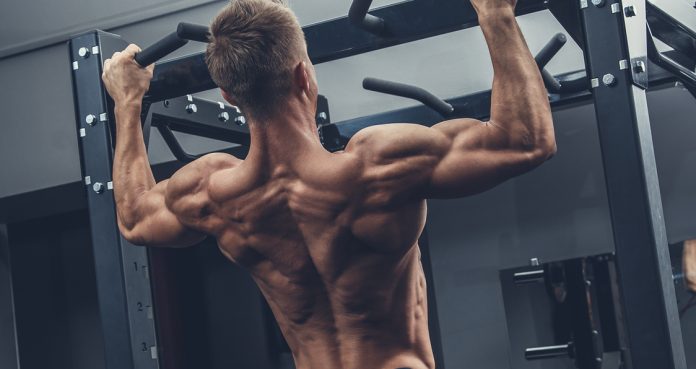
6 Badass Exercises You Can Do With A Pull Up Bar
6 Exercises You Can Do With a Pull-Up Bar
When people think about pull-up bars, they think of people performing pull-ups, but the pull-up bar can help you get so much more accomplished. You can train your complete upper body with nothing more than a bar you can hang on.
In this article, we will walk you through a few exercises you can perform on a pull-bar and build strength, muscle mass, and conditioning as a result. Once you’re done reading the article, you’ll have some cool things to try when you walk up to a pull-up bar the next time.
Pull-Ups/Chin-ups
Call them whatever you want, but the ability to do a pull-up is the biggest proof of your upper body strength. Pull-ups are also one of the most functional exercises you can perform. Imagine apocalypse has hit and you’re hanging by a cliff and the only way to save yourself is to pull yourself up.
We’re sure, at this moment, you wouldn’t want to regret not doing pull-ups at the gym. If you’re a beginner and can’t complete a pull-up, use momentum by jumping to grab the bar or get a spotter to help you with the exercise. Once you get better at this exercise, you can add resistance by using weights.
Muscle Ups
Muscle ups are what separate the men from the boys. It takes a whole new level of strength to complete a muscle-up. Start from a dead hang, complete a pull-up, and once you’re at the top of the pull-up, jerk and get into a chest dip position and complete a chest dip. Return to the dead hang and repeat for reps. The Muscle ups will work your back, biceps, triceps, core, and shoulders.
Underhand Pull-Ups
Life might put you in situations where you need an immediate biceps pump but have nothing more than a straight bar to hang on. Grab the bar with a supinated grip inside shoulder-width, lock your elbows in a place and lift yourself up using your biceps. By the end of this exercise, your biceps will be on fire.
Burpee Chin-Ups
If you’re in a mood to get your cardiovascular system going, we’ve got just the exercise for you. Stand under a pull-up bar, squat and get into a push-up position. Complete a push-up, return to the standing position, jump, grab the bar and complete a chin-up.
Hanging Leg Raises
Hanging leg raises are one of the most effective ab exercises. Hanging onto a bar provides your abs with the isolation to completely annihilate your midriff. Start in the dead hang position, lock out your knees and lift them so they are parallel to the floor.
Hanging Windshield Wipers
Obliques are one of the most overlooked muscles when it comes to upper body training. Hanging windshield wipers will smoke your obliques. In this exercise, you need to copy the movement of a car’s windshield wiper with your legs.
Hang from an overhead bar and shorten your armpits so you’re engaging your shoulders and not just hanging by your armpits. Squeeze your abs and lift your legs so you’re forming a “V” with your upper body and legs. Move your legs from side-to-side while holding them together like they’re one windshield wiper.
Which is your favorite pull-up bar exercise? Let us know in the comments below. Also, be sure to follow Generation Iron on Facebook and Twitter.
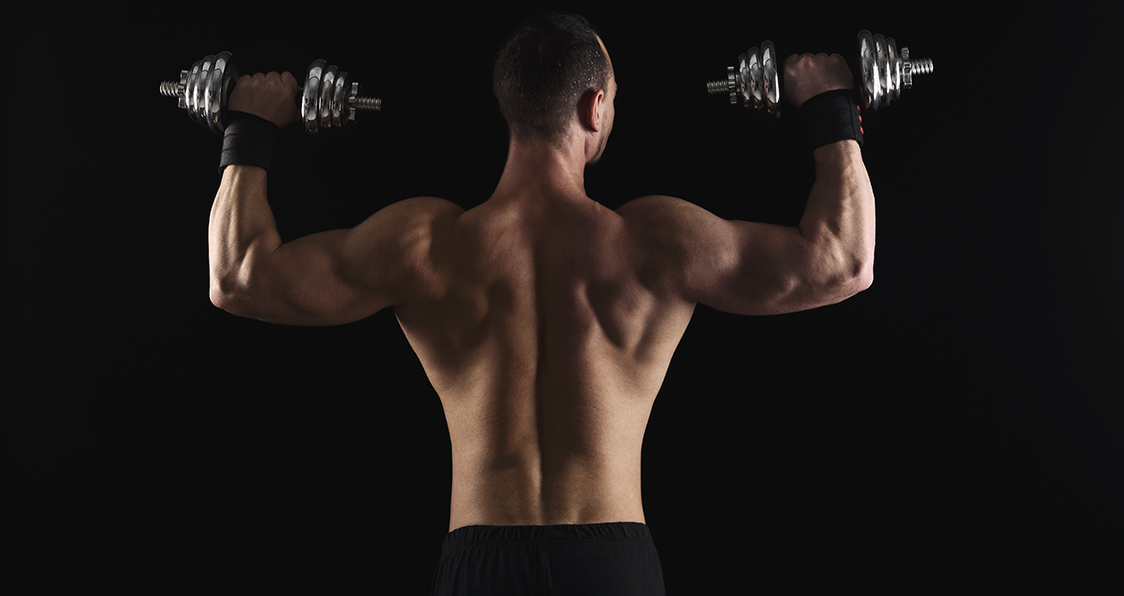
Build Boulder Shoulders With This Insane Workout
Give this workout a try for broad, more rounded shoulders that others will envy.
Sloping shoulders are a sign of physical weakness and is associated with laziness. Plus, it can start to really hurt your confidence and put you in a hole that you just don’t want to go. On the other hand, broad and square shoulders are linked with physically active and strong individuals. If you study the body postures, lethargic people will drag their feet and walk with dropped shoulders while the powerful people walk with an upright posture with broad shoulders. Wide shoulders are an essential part of a V-taper and can give your physique an appealing look. Oh, and it will seriously boost your confidence to.
Aside from the aesthetic that bigger shoulders can provide, it is important to look at the physical benefits of strong shoulders. As a vulnerable joint, strengthening and making sure those muscle and joints are properly taken care of can and will work wonders when it comes to physical performance. Why put yourself in a vulnerable place by not working those shoulders? Really put an emphasis on making these a priority so none of your training and performance goals falter.
Let’s take a look at a great shoulder workout to really boost all of our gains. Knowing what to do and the best ways to get there can be huge when it comes to strengthening and building up our shoulders. This workout is one to surely fire up your muscles to grow so you won’t be disappointed with the results.
Benefits Of Strong Shoulders
When it comes to building up those shoulders, there are some important benefits to know before diving right in.
Benefits of stronger shoulders include:
Increased strength and size: By working your shoulders, you will improve pushing movements for all those great exercises while also seeing them get bigger and turn into tiny boulders (1).
Injury prevention: Working those vulnerable joints can strengthen them and ensure no unwanted pain or injury takes place (2).
Functional benefits: For everyday activities, stronger shoulders overall can aid in functional strength so you can do other things that you love.
Improved posture: Posture can be a make or break for confidence and with stronger, more stable shoulders, you can improve your posture in not time and keep yourself walking taller (3).
Boulder Shoulders Workout
Let’s take a look at this awesome shoulders workout to really build that strength and size. A mix of a variety of exercises with things like supersets and drop sets tossed in will make for an engaging and worthwhile workout when looking to boost your gains. With proper form and a desire to really lift big, this workout is everything you need to really boost those boulder shoulders.
Exercise #1 – Superset
Arnold Press: 3 sets, 10-15-20 reps
Rope Front Raises: 3 sets, 10-15-20 reps
In this workout, we’ll be training the front, medial and posterior deltoids to get the round and full look. The Arnold press trains the medial and the front delts and will give your shoulders the round and bolder look.
Rope front raises are an isolation exercise which works the anterior deltoids. Using the cable machine keeps constant tension on the front delts throughout the movement which helps in better muscle fiber recruitment.
Exercise #2
Seated Side Lateral Raises: 6 sets, 10-12 reps
We’ll perform the lateral raises while being seated as it removes the probability of using momentum to lift the weights. In this exercise, we will start by performing 30 reps in the first set and end the exercise again with 30 reps on the sixth set.
Once you complete the third set, use the same weights to complete the fourth set. The challenge in this exercise is to use the same weights in the fifth and sixth set as you used in the first and second sets. It’ll be hard as the fatigue will have set in.
Exercise #3 – Drop Sets
Barbell Military Press: 3 sets, 8-12 reps
When done with the right form, the barbell military press can be one of the hardest exercises. This exercise is called the military press for a reason. You need to perform the barbell press with a strict form without using any momentum or jerking movement. The military press targets the medial delts effectively. Grab the barbell with a monkey grip and the bar should be resting right above your shoulders at the bottom of the movement.
At the top of the movement, your elbows should be locked out and the bar should be over your temples. With your arms extended over your head, your body should be in a straight line forming a right angle with the floor.
Exercise #4 – Superset
Alternate Dumbbell Front Raise: 3 sets, 10 reps (each arm)
Kneeling Cable Rear-Delt Flyes: 3 sets, 15 reps
The dumbbell front raise targets the anterior delts while the rear-delt flyes target the posterior delts. While performing the front raises, raise the dumbbells to your eye-level and bring them back to your sides.
While standing in the center of the cable pulley machine, grab the right cable with your left hand and vice-versa without any extension. Kneeling down eliminates the use of momentum and isolates your rear delts.
Exercise #5: Superset
Dumbbell Shrugs: 3 sets, 10-20 reps
Bent Over Dumbbell Rear-Delt Flyes: 3 sets, 10-20 reps
Dumbbell shrugs target the trapezius muscle. The dumbbell shrugs give you a better range of motion as compared to the barbell and you can move your shoulders closer to your ears. Start with lighters weights and progress to as heavy weights as you can lift.
Rear delts are one of the weakest muscle groups for most people. They can also be amongst the most stubborn muscles to develop. In the bent over rear-delt flyes, hold the dumbbells with a neutral grip and contract your muscles with every rep.
Wrap Up
Working those shoulders for increased strength and size can work wonders for all your gains and this workout above is a great one to boost those boulder shoulders. By building our shoulders up, we eliminate any vulnerable areas that can cause unwanted pain and strain that we just don’t want. Check out this workout above and really work to build those massive shoulders.
Let us know what you think in the comments below. Also, be sure to follow Generation Iron on Facebook, Twitter, and Instagram.
*Images courtesy of Envato
References
Uribe, Brandon P.; Coburn, Jared W.; Brown, Lee E.; Judelson, Daniel A.; et al. (2010). “Muscle Activation When Performing the Chest Press and Shoulder Press on a Stable Bench vs. a Swiss Ball”. (source)
Wilk, Kevin E.; Obma, Padraic; Simpson, Charles D.; Cain, E.; et al. (2009). “Shoulder Injuries in the Overhead Athlete”. (source)
Greenfield, Bruce; Catlin, Pamela A.; Coats, Peyton W.; Green, Ed; et al. (1995). “Posture in Patients With Shoulder Overuse Injuries and Healthy Individuals”. (source)
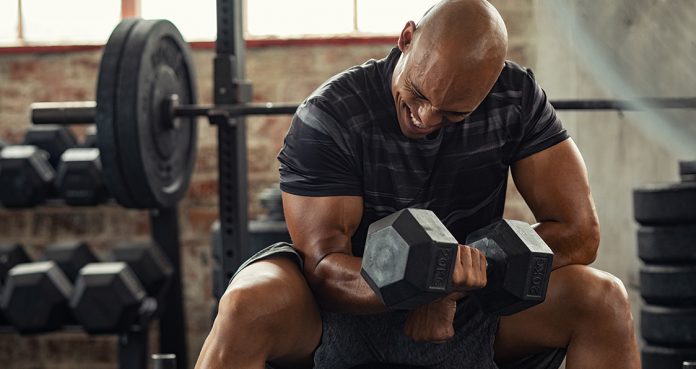
5 Ways To Spike Your Testosterone Levels Naturally
Increase Your Testosterone Levels Naturally With These Steps
Testosterone is the male hormone responsible for the development of male reproductive tissues such as testes and prostate, as well as promoting secondary sexual characteristics such as increased muscle and bone mass, and the growth of body hair.
Testosterone or test is the primary male sex hormone and is also infamous for being an anabolic steroid. Men are able to build muscle mass because of the production of test. A lack of testosterone production in the body can cause many problems including the inability to build muscle mass, hair loss, etc.
Minimize Stress and Cortisol Levels
High levels of stress can elevate the cortisol hormone levels in your body. A spike in cortisol can lead to a reduction in your natural test production. Cortisol and testosterone levels work like a see-saw, when one goes up, the other comes down.
Apart from dropping your test levels, high cortisol can cause various diseases and can lead to excessive eating, weight gain and storage of harmful fat around your organs. Beat the rising cortisol levels by staying happy, laughing, working out, eating whole foods, and a balanced diet.
Do Lower Body Exercises
Working out can help in increasing your natural testosterone levels. A study proves working out can increase testosterone levels, fitness and reaction times in the elderly. Weight training, especially lower body workouts, are great for increasing test production in your body.
HIIT (high-intensity interval training) can also be incredibly effective in increasing natural testosterone production. A little physical activity can take you a long way when it comes to natural T-levels.
Fix Your Diet
Most people see a drop in their test levels because they have a nutrient-deficient diet. You need to be following a balanced diet keeping your daily macro and micronutrient goals in mind.
Dieting for long durations can disrupt your natural testosterone levels. For optimal testosterone levels, you should be eating the right amount of carbs, protein, and fats while maintaining your daily calorie intake.
Supplements
If you want to maintain healthy levels of testosterone or recover your lost test levels, you should consider using supplements. ZMA is a popular supplement amongst gym-goers for raising testosterone production.
Vitamin D and zinc are other supplements which can aid in natural test production. You could also improve your testosterone levels by getting some sun and eating other metals in your food.
Focus on Recovery
Many people worry too much or try to train harder when they find out their testosterone levels are falling. Pushing hard with low T-levels can be counter-productive and may further lower your natural test production.
Focus on your recovery by getting anywhere between 7-8 hours of sleep every night. Take a day or two off from training if you feel exhausted. High-intensity workouts coupled with high cortisol levels are a sure-shot way of lowering testosterone levels.
Header image courtesy of Envato Elements
Do you know how to gauge your testosterone levels? Let us know in the comments below. Also, be sure to follow Generation Iron on Facebook and Twitter.
